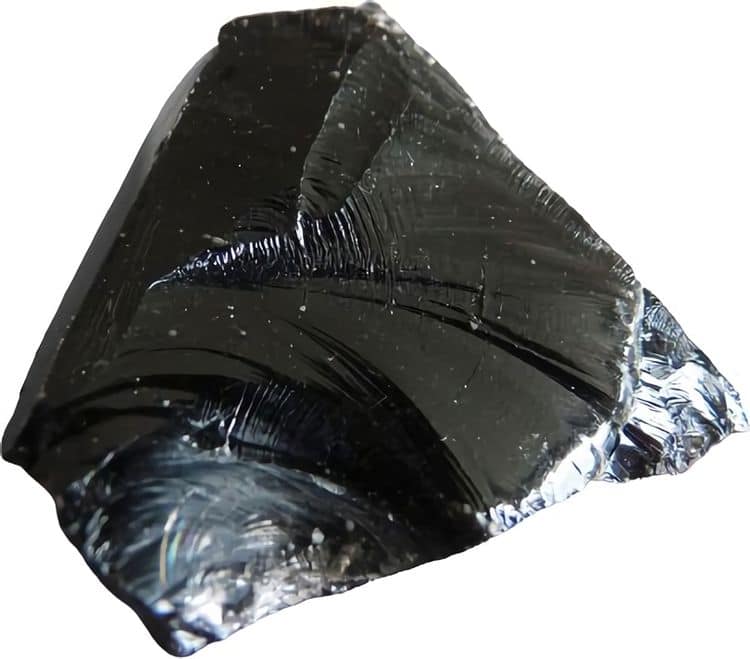Turquoise has long been prized for its striking blue-green colors and intricate matrix patterns. However, not all stones that resemble turquoise are actually true turquoise. There are a number of minerals that can serve as convincing turquoise doppelgangers. While visually similar, these turquoise imposters have their own unique properties, compositions, and origins that set them apart from genuine turquoise.
Some of the most common turquoise lookalikes include variscite, chrysocolla, magnesite, and howlite. These minerals can display an array of blue and green hues when cut and polished. Their appearances can closely mimic the look of high quality turquoise, often at a more affordable cost. However, an expert can distinguish the differences through testing hardness, density, and other diagnostic properties. These turquoise imitators may share a similar aesthetic but lack the prestige and value of true, natural turquoise.
When purchasing turquoise, it is important to learn how to identify fakes and synthetics. Genuine turquoise has distinct characteristics that set it apart from its imposters. Factors like color variation, veining patterns, surface texture and weight provide clues about a stone’s authenticity. While clever copies abound, there are ways to recognize the real deal. With proper care and knowledge, natural turquoise’s incomparable beauty can be appreciated and preserved.
An Ode to Turquoise: An Iconic Gemstone
Before we dive into the world of turquoise lookalikes, let’s take a moment to appreciate the genuine article. Turquoise has been a highly valued gemstone for thousands of years, with evidence of its use in ancient Egypt, Persia, and Native American cultures. Its distinct color, ranging from sky blue to greenish-blue, has long been associated with wisdom, tranquility, and protection.
No wonder, then, that people are eager to find alternative stones that evoke the same aesthetic and energy as turquoise. Whether you’re a collector, a jewelry designer, or simply someone who loves the color blue, you’ll be fascinated by the alternatives we’re about to uncover.
Howlite: A Versatile Impostor
The first stone on our list is howlite, a mineral with a unique ability to imitate other stones, including turquoise. Howlite is naturally white or colorless, with gray or black veins running through it. The stone’s porous nature makes it perfect for dyeing, allowing it to take on the stunning blue hue we associate with turquoise.
While howlite lacks the durability and rarity of genuine turquoise, it’s an affordable and accessible option for those who appreciate the color and veining of turquoise. Consider the story of Laura, a jewelry designer who was struggling to find affordable turquoise for her creations. By discovering howlite, she was able to continue crafting beautiful pieces that captured the essence of turquoise without breaking the bank.
Variscite: The Green Cousin
Variscite, often referred to as the “green cousin” of turquoise, is a lesser-known gemstone that closely resembles our beloved blue beauty. Ranging from light to dark green with blue undertones, variscite shares turquoise’s captivating web-like pattern.
One day, an enthusiastic collector named Jack came across a unique specimen at a gem show. He was convinced it was turquoise, but upon further inspection, he realized it was actually variscite. Jack was thrilled to have stumbled upon this green gem, as it became a prized addition to his collection.
Amazonite: A Dreamy Alternative
Amazonite, a member of the feldspar family, is another stone that shares turquoise’s vibrant blue hue. With colors ranging from pale blue to deep teal, amazonite often features white streaks that add to its visual intrigue.
Picture Sophia, a young woman who loves the color of turquoise but has an affinity for the energy of amazonite. By incorporating amazonite into her wardrobe, she can enjoy the aesthetic of turquoise while benefiting from the stone’s soothing and calming properties.
Magnesite: A Hidden Gem
Another turquoise lookalike, magnesite is a mineral that can be found in a variety of colors, including white, gray, brown, and even blue. When dyed to mimic the color of turquoise, magnesite becomes a convincing substitute.
Magnesite’s affordability and versatility make it a popular choice for jewelry designers like Tom, who was searching for a budget-friendly alternative to turquoise. By using magnesite in his designs, Tom was able to create stunning pieces that evoke the essence of turquoise without the hefty price tag.
Chrysocolla: A Stone of Communication
Our final stone on this list is chrysocolla, a mesmerizing gemstone that showcases a breathtaking blend of blue and green hues. Often found in association with copper deposits, chrysocolla is known for its remarkable similarity to turquoise, making it a sought-after alternative.
Aside from its visual appeal, chrysocolla is also valued for its metaphysical properties. It is known as the “Stone of Communication,” believed to encourage self-expression, clarity, and emotional balance.
Imagine a woman named Isabella who’s always been drawn to the color of turquoise but desires a stone with a deeper connection to her spiritual journey. By choosing chrysocolla, she can wear a gem that not only resembles turquoise but also aligns with her personal growth.
Spotting Fake Turquoise
With the popularity of turquoise jewelry, a lot of fake turquoise exists in the marketplace. Imitation stones like howlite and magnesite are often dyed bright blue and sold as real turquoise. While not technically fakes, these softer reconstituted stones lack the value of genuine turquoise. Here’s how to spot them:
- Scratch Test: Real turquoise rates 5-6 on the Mohs hardness scale. Use a steel nail to scratch the surface of a suspect stone. If it leaves an obvious mark, it’s likely fake. Genuine turquoise is less likely to break or scratch.
- Color: True turquoise shows a range of blue and greenish-blue shades. Fake turquoise is often dyed a uniform, bright “robin’s egg” blue. Natural stones have depth and variation.
- Veining: Many fakes lack the spiderweb matrix veining of true turquoise. Examine stones under magnification to look for natural intricacy. Fakes tend to appear too uniform.
- Weight: With a specific gravity of 2.6-2.9, quality turquoise feels relatively heavy for its size. Fakes made of reconstituted powder are comparatively light.
- Price: If it seems too good to be true, it probably is. Valuable turquoise is one of the rarest, most expensive semi-precious stones. Beware of cheap “bargains”.
- Origin: Turquoise of the finest quality comes from just a few mines worldwide. Reputable dealers provide locality details. Generic “turquoise” may be suspicious.
- Trust your instincts. Stones that look or feel artificial probably are. When purchasing turquoise, buy from an expert or ask for authentication. Fakes abound, but with care the real deal can be found!
FAQ: All About Stones that Look Like Turquoise
What stones look like turquoise?
Some popular stones that resemble turquoise are howlite, variscite, amazonite, magnesite, and chrysocolla. Each of these stones has unique characteristics and properties, but they all share a similar aesthetic to turquoise.
Can these alternatives be used in place of turquoise in jewelry?
Absolutely! These turquoise lookalikes are often used as affordable and versatile alternatives in jewelry designs. Many of them share the vibrant blue or green hues and intricate veining associated with turquoise, making them perfect for various jewelry styles.
Is it easy to tell the difference between turquoise and its alternatives?
It can be challenging for the untrained eye to differentiate between genuine turquoise and its lookalikes. However, a trained gemologist or lapidarist can identify the differences based on factors such as hardness, specific gravity, and other mineral properties.
Are these turquoise substitutes valuable?
While they may not be as valuable as genuine turquoise, these alternative stones have their own unique properties and appeal. Some collectors and jewelry enthusiasts appreciate the affordability and diversity these turquoise lookalikes offer.
Can I use these stones for their metaphysical properties?
Yes, many of these stones, such as chrysocolla and amazonite, are known for their metaphysical properties. They can be used in meditation, energy work, or simply as a talisman for personal growth and balance.
Are dyed stones, like dyed howlite, still considered genuine gemstones?
Dyed stones are still considered genuine gemstones, but their value may be lower than their natural counterparts. Dyed howlite, for example, is an affordable alternative to turquoise but may not carry the same level of prestige or rarity.
How can I care for my turquoise lookalike jewelry?
Caring for your turquoise lookalike jewelry is similar to caring for genuine turquoise. Avoid exposing your jewelry to harsh chemicals, perfumes, or excessive moisture. Clean your stones with a soft cloth and mild soapy water, then pat dry gently.
Can these alternatives be found in the same locations as turquoise?
Some of these stones, like variscite and chrysocolla, may be found in similar geographic locations as turquoise. However, others, like howlite and amazonite, may be found in different regions around the world.
Can these stones be used in combination with turquoise in jewelry designs?
Yes, many designers create stunning pieces that incorporate both turquoise and its lookalikes. Combining these stones can result in eye-catching, unique designs that showcase the beauty and diversity of the gemstone world.
Where can I purchase these turquoise alternatives?
You can find these stones at local gem and mineral shows, specialized gemstone retailers, or online marketplaces. Be sure to research and choose reputable sources to ensure you’re purchasing genuine, high-quality gemstones.
In Conclusion: A World of Turquoise Lookalikes Awaits
Turquoise, with its captivating blue hues and rich history, will always hold a special place in our hearts. However, as we’ve discovered, there’s a whole world of stones that look like turquoise just waiting to be explored.
From the versatile howlite and green-hued variscite to the soothing amazonite, budget-friendly magnesite, and spiritually charged chrysocolla, each of these stones offers a unique take on the classic turquoise aesthetic. Whether you’re a collector, a jewelry designer, or simply someone who loves the color blue, these turquoise doppelgangers are sure to delight and inspire.
So, the next time you find yourself yearning for a turquoise-like gemstone, consider one of these captivating alternatives. You might just uncover a hidden treasure that speaks to your heart, your style, or your journey.




Leave a Reply